Understanding the Basics of Restorative Dentistry
Restorative dentistry encompasses a variety of procedures aimed at restoring the function and appearance of damaged or missing teeth. It focuses on the integration of restorative techniques to enhance dental aesthetics, ensuring both functionality and visual appeal. This branch of dentistry seeks to address various dental issues, such as decay, fractures, or gaps, by employing methods that are both technologically advanced and patient-centered. By utilizing materials that mimic the natural look and feel of teeth, restorative dentistry not only repairs imperfections but also elevates the overall aesthetic quality of one’s smile. The approach is holistic, considering not just the physical restoration but also the psychological benefits of improved dental aesthetics, ultimately contributing to greater patient satisfaction and oral health confidence.




Common Restorative Dental Procedures
Restorative dental procedures play a critical role in repairing and enhancing the function and appearance of teeth. Among the most prevalent options are dental fillings, which address cavities using materials like amalgam or composite resin. Additionally, crowns and bridges offer structural support and aesthetic improvement, while root canal treatment is essential for addressing infections within the tooth’s pulp.
Dental Fillings Options
When it comes to addressing dental decay or damage, dental fillings stand out as a fundamental solution in restorative dentistry. Among the available options, composite fillings and amalgam fillings are particularly prominent. Composite fillings, made from a resin-based material, offer a tooth-colored appearance, making them ideal for visible areas. They bond directly to the tooth structure, providing support and a natural look. In contrast, amalgam fillings, composed of a mixture of metals including silver, mercury, and tin, are known for their durability and strength, ideal for areas subjected to significant chewing forces. Although less aesthetically pleasing, amalgam fillings are often cost-effective and have a long track record of success. Both options present patients with distinct advantages tailored to specific dental needs.
Crowns and Bridges Benefits
Addressing dental issues often involves more than just fillings; crowns and bridges are integral components in restorative dentistry. Crowns are custom-designed caps that cover damaged teeth, offering both protection and aesthetic improvement. Made from various crown materials—such as porcelain, ceramic, and metal—these restorative devices are selected based on the patient’s needs and the location of the tooth. Each material offers distinct advantages, from durability to a natural appearance. Bridges, on the other hand, fill gaps left by missing teeth, restoring not only the smile’s appearance but also functionality. The bridge longevity depends on factors like material choice and oral hygiene practices. Together, crowns and bridges contribute greatly to maintaining oral health and enhancing the quality of life for dental patients.
Root Canal Treatment Process
Despite its intimidating reputation, the root canal treatment process is a cornerstone of modern restorative dental procedures. This procedure aims to save a tooth by removing infected pulp, cleaning the canal, and sealing it to prevent further infection. Effective pain management is essential, and local anesthesia is typically employed to guarantee patient comfort during the process. Dentists may also prescribe medication to alleviate post-procedure discomfort.
Recovery tips include avoiding hard foods immediately after treatment and maintaining oral hygiene to promote healing. Patients are advised to follow their dentist’s specific instructions and attend follow-up appointments to monitor recovery. While the term “root canal” may conjure fear, advancements in dental techniques have made the process more efficient and considerably less painful.
Advanced Techniques in Restorative Dentistry
As dental technology evolves, advanced techniques in restorative dentistry have revolutionized the way practitioners approach tooth restoration and rehabilitation. Digital restorations are at the forefront, utilizing computer-aided design and manufacturing (CAD/CAM) to create precise dental prosthetics. This technology allows for faster turnaround times and enhanced accuracy, improving patient outcomes. Moreover, minimally invasive techniques have gained prominence, focusing on conserving as much of the natural tooth structure as possible. Techniques such as adhesive dentistry and the use of biocompatible materials contribute to the preservation of healthy tissue while providing durable and aesthetically pleasing restorations. These advancements represent a significant shift towards personalized, efficient, and patient-centric dental care, highlighting the importance of staying abreast of technological progress within the field.
The Role of Fillings and Crowns in Dental Health
Fillings and crowns play a pivotal role in maintaining dental health by restoring function and aesthetics to damaged or decayed teeth. Fillings are used to fill cavities or minor fractures, employing filling materials such as amalgam, composite resins, or glass ionomer. These materials are selected based on their durability and compatibility with the natural tooth structure. Crowns, on the other hand, completely encase a damaged tooth, providing protection and structural support. Various crown types, including porcelain, ceramic, metal, and porcelain-fused-to-metal, offer different levels of strength and aesthetic appeal. The choice of crown material depends on the tooth’s location and functional requirements. Both fillings and crowns guarantee the longevity of teeth by preventing further decay and restoring the patient’s ability to chew effectively.
Exploring Bridges and Implants for Tooth Replacement
Why do dental professionals often consider bridges and implants as effective solutions for tooth replacement? Both options address key concerns such as tooth longevity and aesthetic enhancement. Bridges, consisting of artificial teeth supported by adjacent natural teeth or implants, provide a reliable solution for filling gaps. They help maintain facial structure and prevent neighboring teeth from shifting, contributing to overall oral stability.
Dental implants, on the other hand, are lauded for their durability and potential to last a lifetime. Surgically inserted into the jawbone, they mimic natural tooth roots, offering exceptional stability. Implants also support bone health and promote a natural appearance, enhancing the patient’s smile. Both bridges and implants aim to restore functionality and appearance, making them integral to restorative dentistry.
Benefits of Restorative Dentistry for Oral Health
Restorative dentistry plays an essential role in maintaining oral health by addressing the damage and wear that can occur over time. It provides solutions such as fillings, crowns, and bridges, which help restore function and aesthetics to compromised teeth. This branch of dentistry not only repairs existing issues but also emphasizes preventive care to mitigate future problems. By preserving natural tooth structure and preventing further decay, restorative procedures can lead to long term savings in dental costs. Regular maintenance and timely intervention reduce the risk of extensive treatments later. In addition, restorative dentistry fosters better oral hygiene, enhances chewing efficiency, and prevents jaw misalignment. Collectively, these benefits contribute to improved overall oral health and quality of life, while minimizing future dental expenses.
Choosing the Right Restorative Dentist for Your Needs
How does one navigate the process of selecting the right restorative dentist for their needs? An essential step involves evaluating the dentist qualifications. Prospective patients should research the dentist’s education, certifications, and experience in restorative procedures. This background information guarantees the dentist possesses the necessary skills to meet specific dental needs. Equally important is the consultation process. During an initial consultation, individuals can assess the dentist’s communication style and willingness to address concerns. This interaction provides insights into the dentist’s approach to patient care and problem-solving abilities. Recommendations from trusted sources, such as family or friends, can also guide the decision. By carefully considering qualifications and undergoing a thorough consultation process, individuals can confidently choose a restorative dentist suited to their unique requirements.
Visit Us Today
Let OraCare Dental Centre be your partner in lifelong oral health. Whether it’s your first visit or your fiftieth, we’re here to make your dental experience exceptional.
